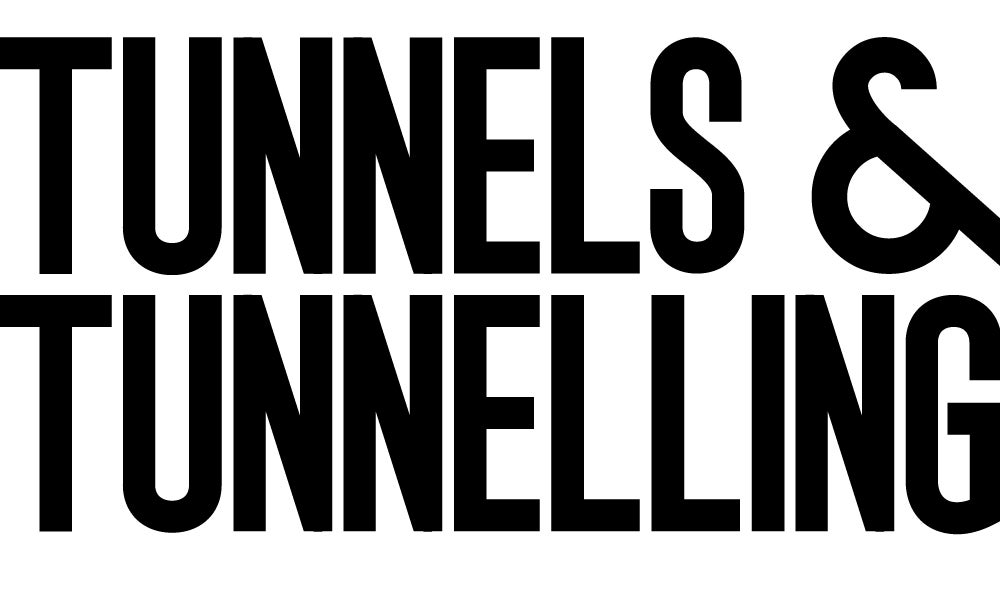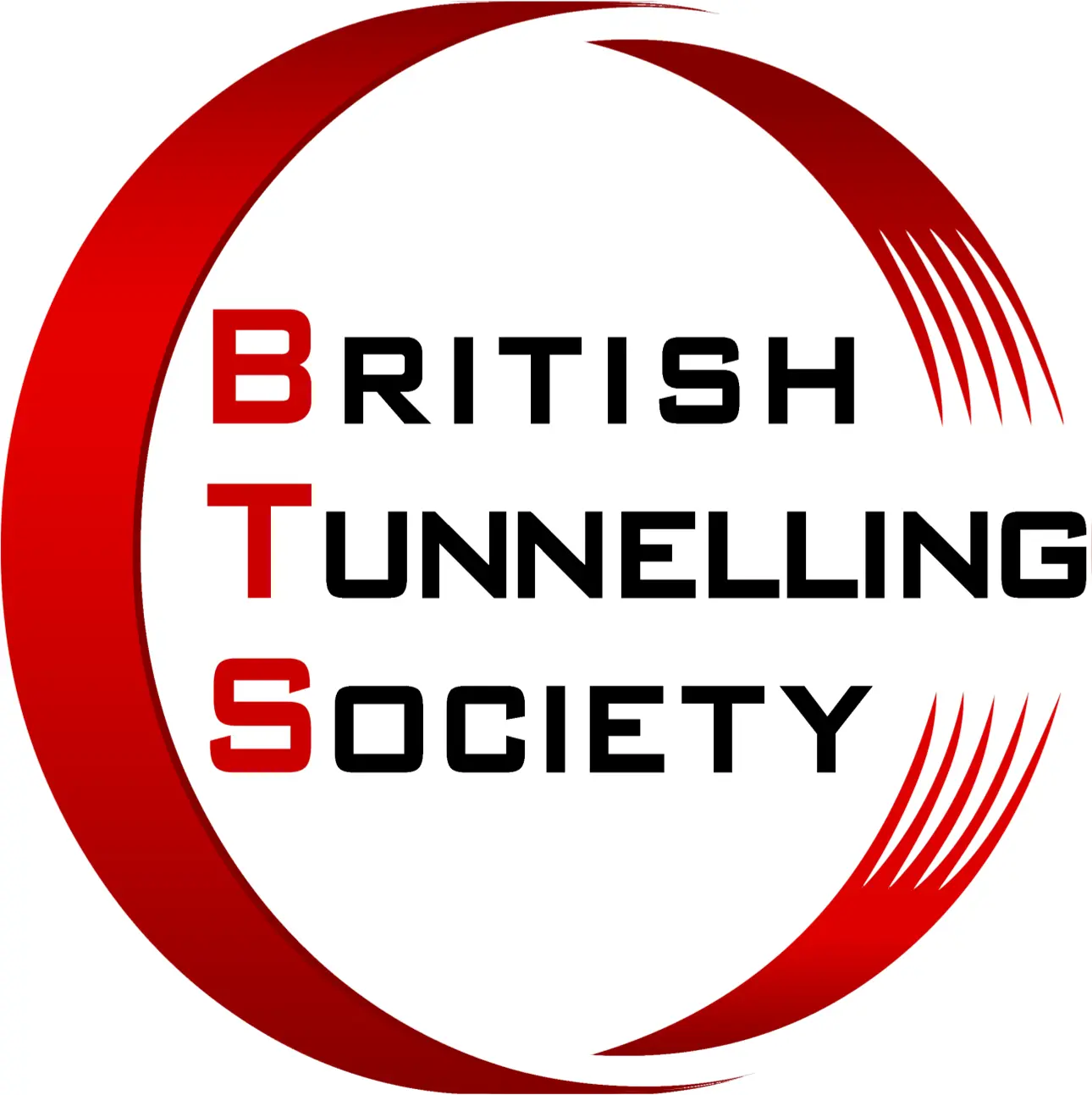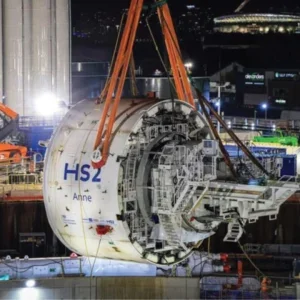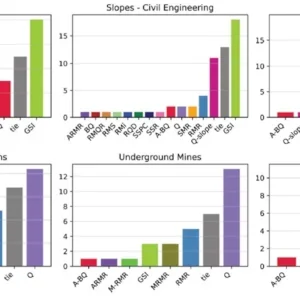Sprayed concrete, often referred to as ‘shotcrete’, has proved especially suitable for underground applications, mainly for lining hardrock tunnels. But it is increasingly common for use in softer ground. An ITA-AITES WG12 survey of permanent sprayed concrete-lined tunnels up to 2015 listed more than 140 projects, totalling more than 600km. The list of SCL projects including those with temporary linings would amount to many thousands of kilometres.
Relatively recent pioneering examples of tunnels in the UK with sprayed concrete lining (SCL) include the Heathrow Express and the Jubilee Line. Major recent or current projects using SCL include Crossrail, HS2 and extensions to Bank station on the London Underground.
Dr Alun Thomas is the founder of tunnelling consultancy All2plan and is co-author of an ITA WG12 report on permanent sprayed concrete linings to be published in late 2020. He is also author of ‘Sprayed Concrete Lined Tunnels’ published recently by CRC Press (crcpress.com) and reviewed by this magazine in May 2020. As an authority on shotcrete, he sees potential for many improvements over current practice.
The driving force, he says, is much more than simply economic. Tunnels must certainly be made more cheaply and efficiently if that is possible. But given the emergency in our climate they must also be made using methods and materials that emit far less CO2.
Reducing Embodied Energy
“The construction industry is typically responsible for about 5-10% of an industrialised nation’s total emission of greenhouse gasses” he says. “This largely arises from the embodied carbon dioxide (CO2) in the primary construction materials of cement and steel. Cement production is a massive emitter of CO2.”
For example, in the HS2 project (figure 1) 45% of the CO2 footprint of Phase One is from the materials used; only 24% comes from operating the trains. Tunnels on the line account for 29% of the greenhouse gas emissions related to construction even though tunnels total only about 17% of the route. This is, in effect, because tunnels contain so much concrete and steel.
Embodied CO2 can be defined as the emissions involved in manufacturing and preparing the raw materials, in transporting them and in putting them into place. Reducing it is a key requirement in fighting climate change. An additional motive and concentrator of minds may be provided by those who commission tunnels.
Thomas is currently based in Scandinavia. “Much depends” he says “on how much one is willing to spend to reduce emitted CO2. Sweden and Norway give bidders benefit for lower carbon solutions in evaluation. Both the National Road Authority in Norway (Statens Vegvesen) and the Transport Authority in Sweden (Trafikverket) demand CO2 costings for major projects, with incentives for reducing emissions: if your design and method score well on the environmental criteria, there can be a discount on the bid price.” In other words if you propose a CO2-friendly tunnel you are more likely to be awarded the contract.
What options, then, are available in tunnel construction, and in shotcrete in particular, for reducing the CO2 footprint? The approach, says Thomas, should be twofold. “You can change your design; or you can change the materials that you use.
“The easiest way to reduce carbon is to change the design. If you reduce the quantity of the tunnel lining or excavation, you will automatically reduce the carbon footprint. The single change that makes most difference to CO2 emitted is using less concrete in your design, followed closely by using less steel. “Indeed, a goal for designers for the past 20 years has been to reduce the thickness of sprayed concrete linings.”
Double-Shell Sprayed Concrete
To that end, he has been working on the design philosophy of sprayed concrete tunnels. The ‘double shell’ approach is one that has been used for soft ground.
A temporary lining is sprayed onto the inside of the tunnel immediately after excavation to secure the ground while the rest of construction proceeds. Then a secondary, permanent, lining is built inside it, either cast insitu or sprayed. This layer is to take the permanent loadings from the ground on the tunnel. A waterproof sheet membrane is typically installed between the two.
A New Basis for Shotcrete Design
“But it has been recognised for a long time that as the quality of sprayed concrete has improved this approach is over-conservative and wasteful” he says. In particular the assumption that the first layer takes the stresses of the tunnel only temporarily, in the short-term, is unlikely to be true. Measurements of real tunnels have shown that the secondary linings are often not carrying as much load as would be expected. The reason is that the primary lining continues to carry load into the long term.
“If shotcrete tunnels can be designed on this new basis, that the primary lining continues to take load, then potentially the secondary lining can be made much thinner” says Thomas.
That gives a double whammy in savings: firstly you are using less volume of concrete in the secondary lining; and secondly, because that lining is thinner the original excavation can be of correspondingly smaller diameter for the same finished diameter – which also lowers costs and energy. “The idea that you are installing all that primary-layer concrete but not using it to carry any structural load in the finished tunnel is clearly colossally wasteful” he says.
Single-shell tunnels in soft ground have been successfully constructed: the Heathrow Terminal 5 project is a notable example. “That was entirely of permanent sprayed concrete, designed so that all of the sprayed concrete took permanent load. Seventy-five millimetres of it was sacrificial, but the tunnel proved that you can put almost everything you spray to permanent structural use. But the success of that tunnel relied generally on the impermeable nature of the London clay” says Thomas. “It was also relevant that this was not a public tunnel, so small damp patches and superficial non-structural cracks were of less concern.”
Using a two-pass sprayed system with the secondary lining made thinner depends on a good structural bond, both in tension and (especially) in shear, through the bonded spray applied waterproof membrane located between the two layers. In effect, the two layers become one and composite, sharing the load between them. This underlies the name of Fully Composite Shell Lining, or CSL.
Crossrail
One approach to the CSL concept has been made on Crossrail. The design can be described as a ‘partially composite shell lining’, since it was felt at the time that there was insufficient test data and project experience on the behaviour of the membrane-to-lining bond to adopt a ‘fully composite shell’ approach.
“Two design assumptions were therefore made,” says Thomas: “That there was zero bond at the membrane, and that the water pressure acts entirely on the outer face of the membrane. The design has been successfully built. It could be criticised as overly conservative, on the grounds that the two assumptions meant that no overall reduction of thickness of the secondary layer in fact occurred. Even so, it should be remembered that the new design dramatically reduced the steel reinforcement needed and also reduced construction time. Crossrail was the first major UK project to use this type of permanent sprayed concrete lining throughout.
“I agree with some of the critics: the technology can be and could have been pushed further. Design philosophy can be optimistic or cautious in its assumptions, and in Crossrail some designers tended to the cautious, but you need a progression and on a project of that size and significance no client wants to be too radical. And these included public areas like platform tunnels, where a higher level of watertightness is needed so the waterproof membrane was necessary. Crossrail was a huge and significant step forward and one should not underestimate it.”
Steel-Fibre Reinforcement
Concrete needs reinforcement. Sprayed concrete is no exception, and here too technology is changing. “A great leap forward was replacing steel mesh, installed on the surface ahead of spraying, with steel fibres, mixed into the shotcrete and sprayed on with it” he says.
“Using steel fibres roughly halves the weight of steel that you need and the technology is now very well established in the UK. But recently, macro-synthetic fibres have arrived and there are vigorous debates going on between advocates of steel and macro-synthetic.” There is also an evolutionary race between them. “Macro-synthetic fibres are wavy along their length. That is what gives them part of their success. Where they span a crack in the concrete the fibres must not snap, and the multiple kinks provide a greater resistance to pull-out.
“The steel-fibre manufacturers responded by creating multi-kink fibres in high-grade steel. Again the wavy form is very beneficial, and the increased grade of the steel goes hand in hand with increased bond resistance.”
Introducing Rock Fibres
In the choice of reinforcing fibre, a new competitor is appearing. Tensile fibre made from rock seems a counterintuitive concept, but basalt fibre is exactly that. Basalt is one of the most common igneous rocks on earth. By melting it (at around 1,500°C) and extruding the molten liquid through fine nozzles, continuous fibres are produced. The process and the product are analogous to rock wool (used for insulation), but basalt fibres have better mechanical properties. They have a higher modulus of elasticity, resulting in high specific strength — three times that of steel. Typical filament diameters are between 10 and 20μm.
“Basalt has lower embodied carbon than steel, because of its lighter weight. The fibre can be in the form of a twisted ribbon, which gives added tensile strength in resistance to cracking. It has been used up to now in a few construction projects, where it has demonstrated similar performance to macrosynthetic or standard steel fibres. It is an exciting new product, and one which I think has great potential,” explains Alun Thomas.
Application machinery for shotcrete is also changing. “There is a shift towards sustainability on the part of equipment manufacturers” he says. “They are ahead of some parts of the tunnelling industry in moving away from fossil fuels. So we are seeing spraying machines powered by electricity or bio-diesel, and excavators powered by hydrogen fuel-cells. Construction sites are perfect for alternative fuels because they do not have the issue of limitation of range which can affect other road vehicles. In some versions, the equipment can use bio-diesel to drive itself down the tunnel, and at the face it can hook up to electricity for working. And disadvantages can be turned to opportunities: hydrogen fuel cells are heavy, but an excavator needs to be heavy for its stability so a fuel cell becomes a good option for it. The penalty has become an opportunity.
“And of course electricity assists in automation too. This opens the door to remote control of vehicles. Checking the surface before and after spraying can now be achieved automatically. [See below on Scanning and Spraying].”
“Overall there has been much talk about sustainability in tunnelling” says Thomas “but very few published examples of what can actually be done and of what can be changed – for example in procurement – to promote it.
As a sector we need to embrace it. That is what is driving me.”
Scanning and spraying
Civil engineering uses more and more data modelling to produce design blueprints for construction projects. Laser scanning can record and document projects as they are actually built. When these are combined, a highly efficient way of communicating between design and as-built documentation can be achieved. This is particularly important in tunnelling, where the realised excavated surfaces are often not completely identical with the designed ones, due to the nature of excavating rock or soil.
Normet is introducing technology to scan and map tunnel surfaces in real time as the shotcrete is sprayed. SmartScan uses an analysis algorithm to understand the underground conditions and to produce reliable layer thickness information in real time on challenging rock and sprayed concrete surfaces. It allows nozzlemen to do scanning of their sprayed concrete thickness as they apply it.
“The system uses a laser scanner unit mounted in front of the sprayer” says Panu Oikkonen, Director of Underground Process Excellence at Normet. “The scanner, enclosed in a protective casing to withstand the tough conditions, produces a 3D point cloud; on-board software calculates the sprayed concrete layer thickness and conveys it to the operator via a robust tablet computer, which is also integrated into the sprayer. The visualised data helps the operator to get the layer thickness right with the first pass.
This results in faster operation with no need to come back to respray any areas which might otherwise be thinner than required. The correct layer thickness also adds safety and gives cost savings since over-thick layers sprayed ‘just in case’ are not needed and can be instantly detected. By geo-referencing the real-time data from laser scanning, monitoring the actual as-built tunnelling advance in comparison to the designed tunnel profile becomes easier, faster and more accurate.
The material savings in concrete also result in huge environmental improvement. Concrete is generally regarded as an extremely good construction material when correctly used, but it has a substantial environmental impact. This is why any measures that avoid excess use of concrete are important and called for.
Desktop software for office use can further analyse, report and file the scan data for future maintenance and analysis of the tunnel’s performance.






